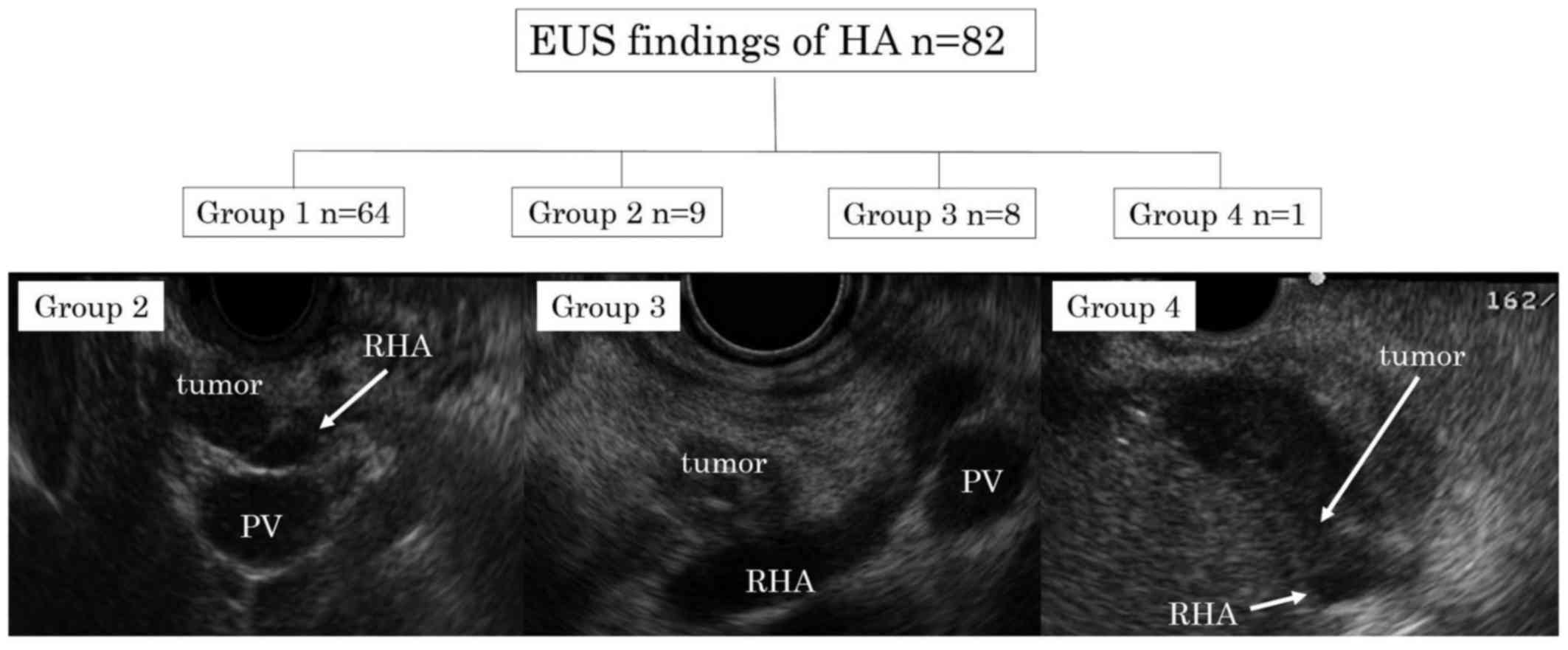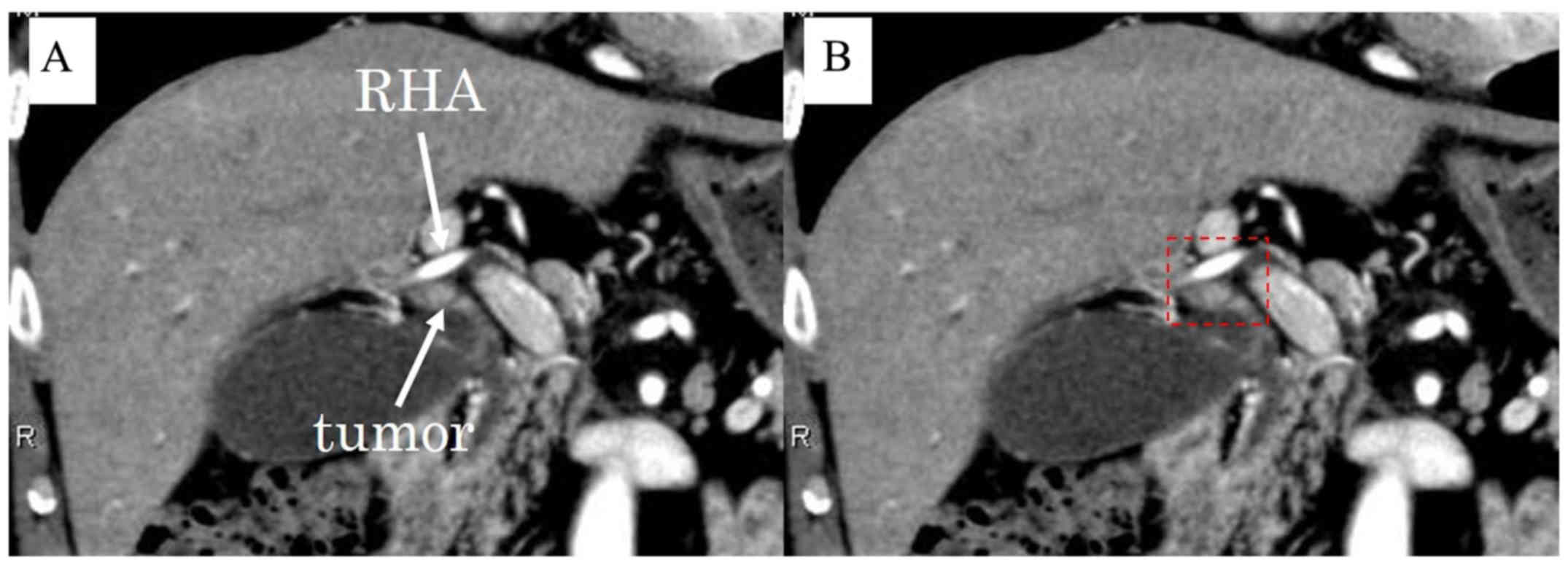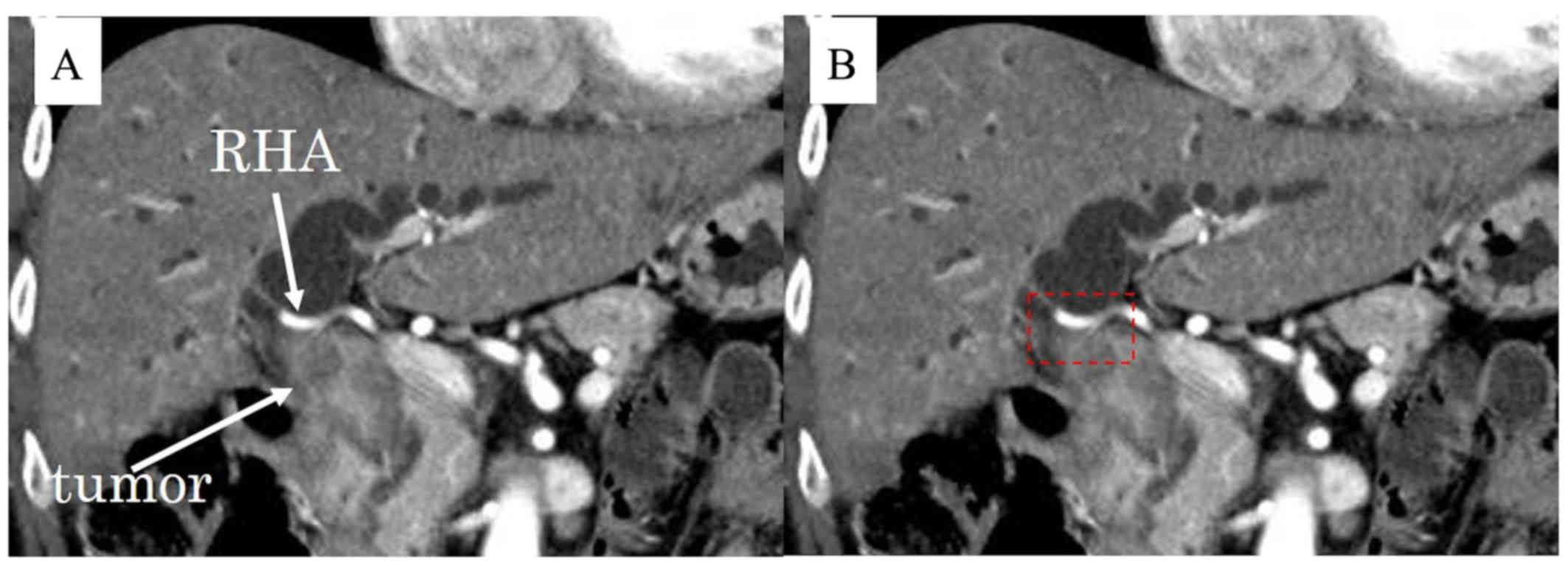|
1
|
Valle JW: Advances in the treatment of
metastatic or unresectable biliary tract cancer. Ann Oncol. 21
Suppl 7:vii345–vii348. 2010. View Article : Google Scholar : PubMed/NCBI
|
|
2
|
Valle J, Wasan H, Palmer DH, Cunningham D,
Anthoney A, Maraveyas A, Madhusudan S, Iveson T, Hughes S, Pereira
SP, et al: Cisplatin plus gemcitabine versus gemcitabine for
biliary tract cancer. N Engl J Med. 362:1273–12781. 2010.
View Article : Google Scholar : PubMed/NCBI
|
|
3
|
Khan SA, Thomas HC, Davidson BR and
Taylor-Robinson SD: Cholangiocarcinoma. Lancet. 366:1303–1314.
2005. View Article : Google Scholar : PubMed/NCBI
|
|
4
|
Hara K, Bhatia V, Hijioka S, Mizuno N and
Yamao K: A convex EUS is useful to diagnose vascular invasion of
cancer, especially hepatic hilus cancer. Dig Endosc. 23 Suppl
1:26–28. 2011. View Article : Google Scholar : PubMed/NCBI
|
|
5
|
Yang R, Lu M, Qian X, Chen J, Li L, Wang J
and Zhang Y: Diagnostic accuracy of EUS and CT of vascular invasion
in pancreatic cancer: A systematic review. J Cancer Res Clin Oncol.
140:2077–2086. 2014. View Article : Google Scholar : PubMed/NCBI
|
|
6
|
Tellez-Avila FI, Chavez-Tapia NC,
Lόpez-Arce G, Franco-Guzmán AM, Sosa-Lozano LA, Alfaro-Lara R,
Chan-Nuñez C, Giovannini M, Elizondo-Rivera J and Ramírez-Luna MA:
Vascular invasion in pancreatic cancer: Predictive values for
endoscopic ultrasound and computed tomography imaging. Pancreas.
41:636–638. 2012. View Article : Google Scholar : PubMed/NCBI
|
|
7
|
Sobin L, Gospodarowicz M and Wittekind C:
UICC international union against cancerTNM Classification of
Malignant Tumours. Wiley-Blackwell; New York: pp. 118–126. 2009
|
|
8
|
Lazaridis KN and Gores GJ:
Cholangiocarcinoma. Gastroenterology. 128:1655–1667. 2005.
View Article : Google Scholar : PubMed/NCBI
|
|
9
|
Irisawa A and Yamao K: Curved linear array
EUS technique in the pancreas and biliary tree: Focusing on the
stations. Gastrointest Endosc. 69(2 Suppl): S84–S89. 2009.
View Article : Google Scholar : PubMed/NCBI
|
|
10
|
Mohamadnejad M, DeWitt JM, Sherman S,
LeBlanc JK, Pitt HA, House MG, Jones KJ, Fogel EL, McHenry L,
Watkins JL, et al: Role of EUS for preoperative evaluation of
cholangiocarcinoma: A large single-center experience. Gastrointest
Endosc. 73:71–78. 2011. View Article : Google Scholar : PubMed/NCBI
|
|
11
|
Unno M, Okumoto T, Katayose Y, Rikiyama T,
Sato A, Motoi F, Oikawa M, Egawa S and Ishibashi T: Preoperative
assessment of hilar cholangiocarcinoma by multidetector row
computed tomography. J Hepatobiliary Pancreat Surg. 14:434–440.
2007. View Article : Google Scholar : PubMed/NCBI
|
|
12
|
Watadani T, Akahane M, Yoshikawa T and
Ohtomo K: Preoperative assessment of hilar cholangiocarcinoma using
multidetector-row CT: Correlation with histopathological findings.
Radiat Med. 26:402–407. 2008. View Article : Google Scholar : PubMed/NCBI
|
|
13
|
Lee HY, Kim SH, Lee JM, Kim SW, Jang JY,
Han JK and Choi BI: Preoperative assessment of resectability of
hepatic hilar cholangiocarcinoma: Combined CT and cholangiography
with revised criteria. Radiology. 239:113–121. 2006. View Article : Google Scholar : PubMed/NCBI
|
|
14
|
Endo I, Shimada H, Sugita M, Fujii Y,
Morioka D, Takeda K, Sugae S, Tanaka K, Togo S, Bourquain H and
Peitgen HO: Role of three-dimensional imaging in operative planning
for hilar cholangiocarcinoma. Surgery. 142:666–675. 2007.
View Article : Google Scholar : PubMed/NCBI
|
|
15
|
Sugiyama M, Hagi H, Atomi Y and Saito M:
Diagnosis of portal venous invasion by pancreatobiliary carcinoma:
Value of endoscopic ultrasonography. Abdom Imaging. 22:434–438.
1997. View Article : Google Scholar : PubMed/NCBI
|
|
16
|
Tio TL, Reeders JW, Sie LH, Wijers OB,
Maas JJ, Colin EM and Tytgat GN: Endosonography in the clinical
staging of Klatskin tumor. Endoscopy. 25:81–85. 1993. View Article : Google Scholar : PubMed/NCBI
|
|
17
|
Mukai H, Nakajima M, Yasuda K, Mizuno S
and Kawai K: Evaluation of endoscopic ultrasonography in the
pre-operative staging of carcinoma of the ampulla of Vater and
common bile duct. Gastrointest Endosc. 38:676–683. 1992. View Article : Google Scholar : PubMed/NCBI
|
|
18
|
Miyazaki M, Kato A, Ito H, Kimura F,
Shimizu H, Ohtsuka M, Yoshidome H, Yoshitomi H, Furukawa K and
Nozawa S: Combined vascular resection in operative resection for
hilar cholangiocarcinoma: Does it work or not? Surgery.
141:581–588. 2007. View Article : Google Scholar : PubMed/NCBI
|
|
19
|
Ebata T, Nagino M, Kamiya J, Uesaka K,
Nagasaka T and Nimura Y: Hepatectomy with portal vein resection for
hilar cholangiocarcinoma: Audit of 52 consecutive cases. Ann Surg.
238:720–727. 2003. View Article : Google Scholar : PubMed/NCBI
|
|
20
|
Matsuyama R, Mori R, Ota Y, Homma Y,
Kumamoto T, Takeda K, Morioka D, Maegawa J and Endo I: Significance
of vascular resection and reconstruction in surgery for hilar
cholangiocarcinoma: With special reference to hepatic arterial
resection and reconstruction. Ann Surg Oncol. 23 Suppl 4:S475–S484.
2016. View Article : Google Scholar
|




















